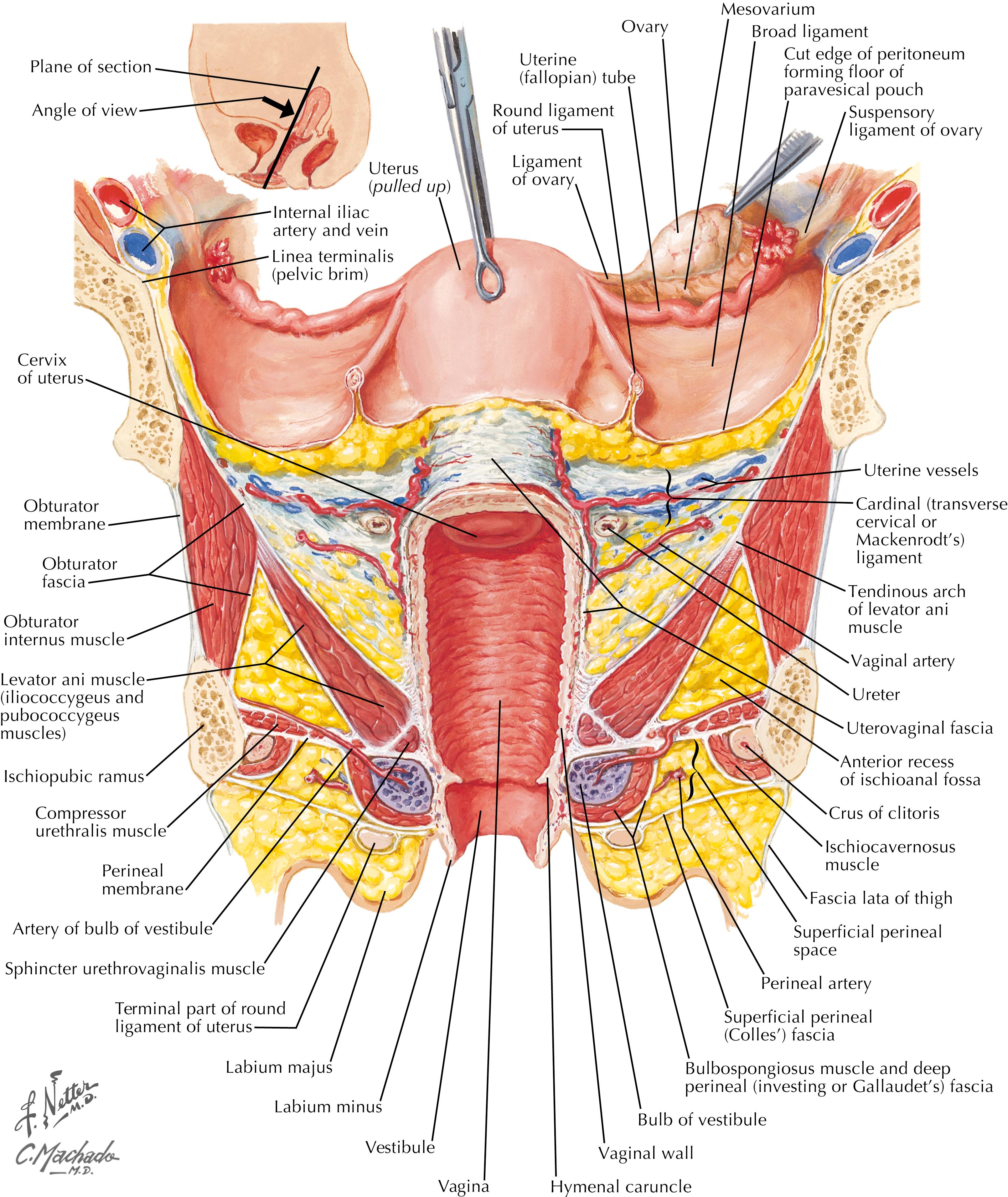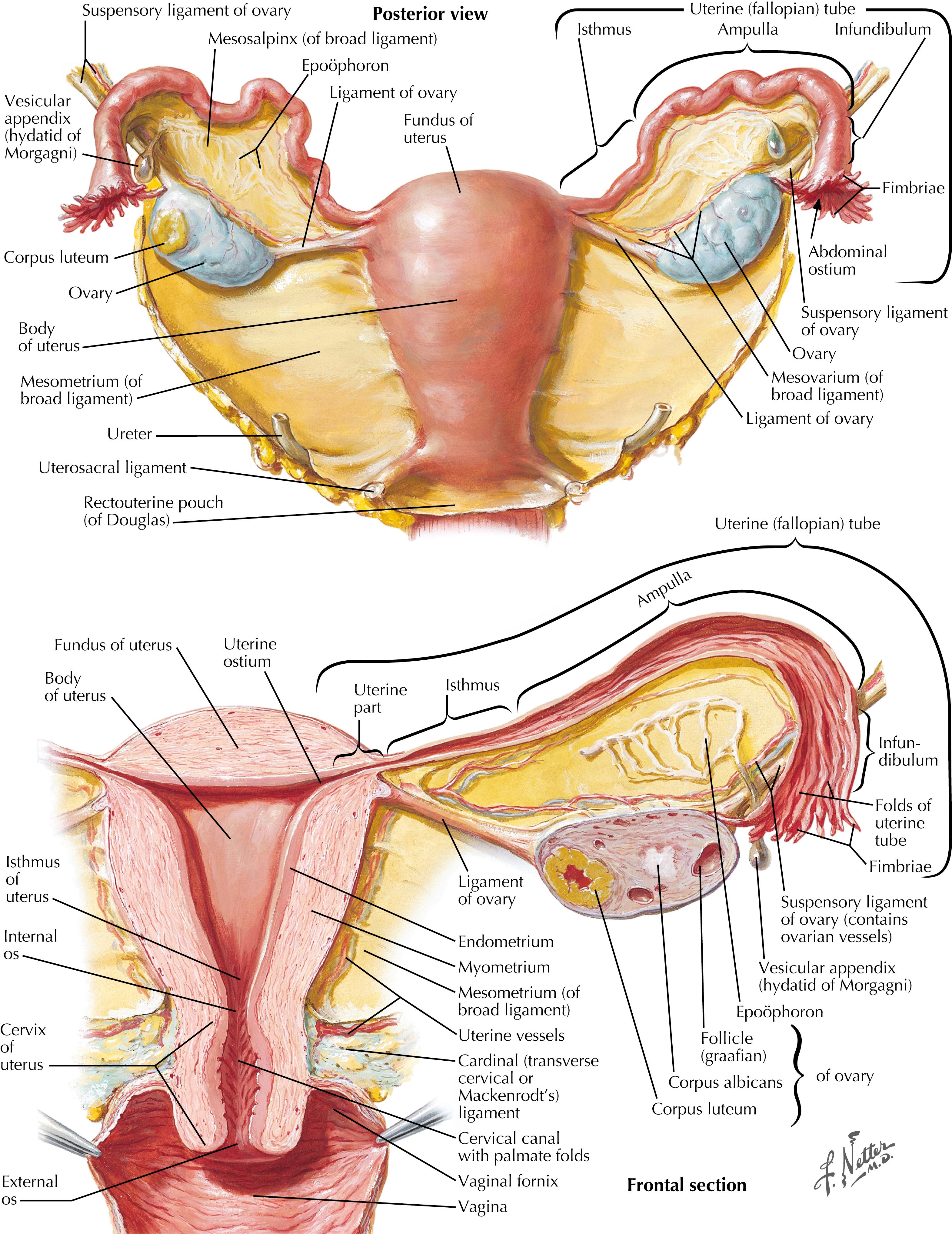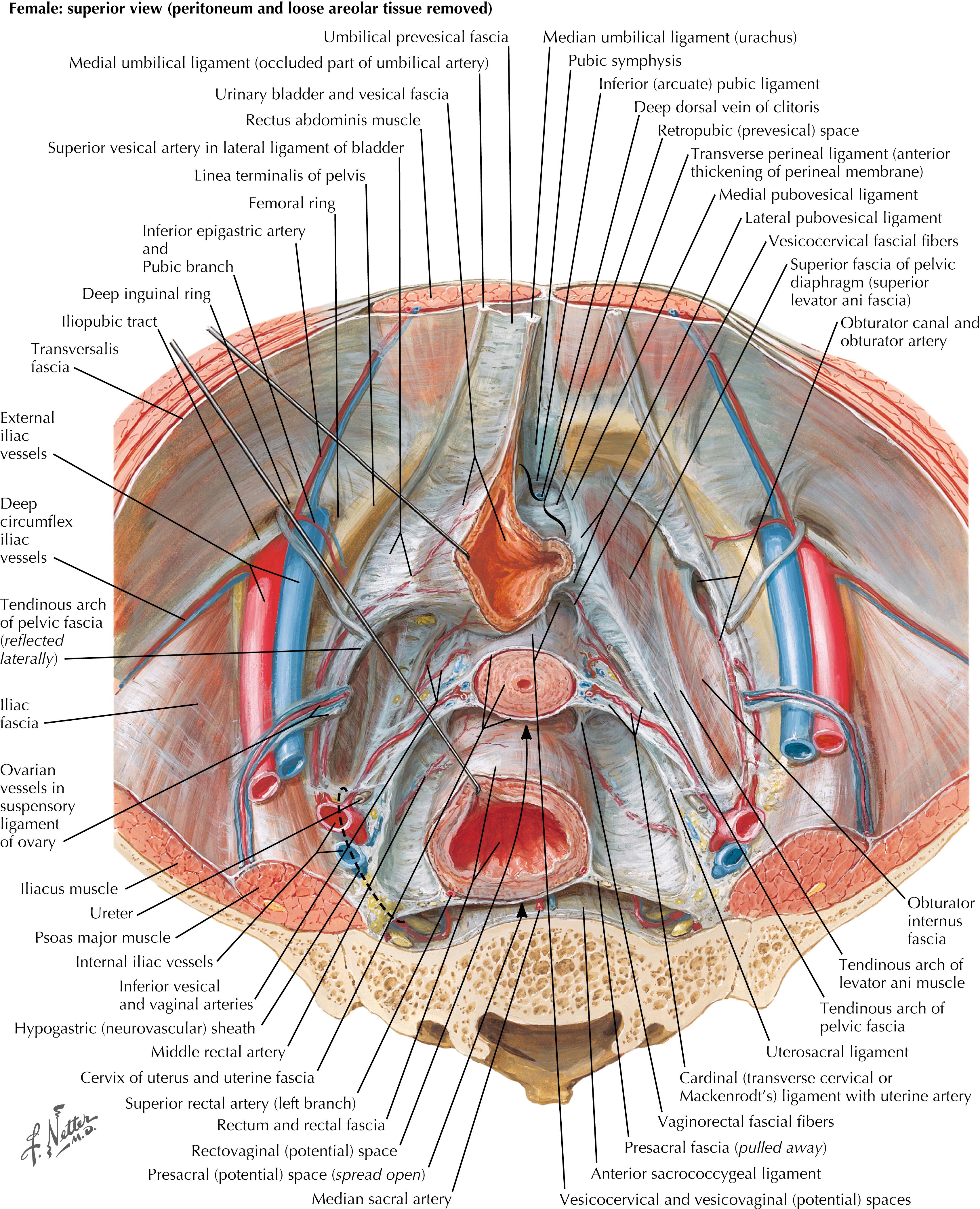Physical Address
304 North Cardinal St.
Dorchester Center, MA 02124
Hysterectomy remains one of the most common surgical procedures in women and is performed for benign and malignant conditions. The surgical approach varies by pathology, anatomic variations in disease and patients, and the skill set of the surgeon. In the United States, hysterectomy rates have been declining over the last two decades. Abdominal hysterectomy remains the most common approach. However, laparoscopic and robotic-assisted approaches are slowly reducing the proportion of abdominal hysterectomy. This chapter focuses on anatomy pertinent to completion of extrafascial abdominal and laparoscopic or robotic hysterectomy (minimally invasive hysterectomy, or MIH); the basic anatomy and steps are similar among procedures.
An excellent understanding of the anatomic relationships between the ligamentous attachments and vascular supply to the uterus and the proximity to surrounding structures is a prerequisite to performing a safe and efficient hysterectomy. Although pathology can alter the anatomy of the pelvis, an understanding of normal anatomic relationships allows for easy transition between abdominal hysterectomy and MIH, because the sequence of events is very much the same in these varying surgical approaches. An excellent knowledge of the retroperitoneal anatomy will pay significant dividends when the surgeon is faced with a difficult case involving intraperitoneal adhesions from prior inflammation, endometriosis, or tumor implants, or when the anatomy is distorted by large uterine leiomyoma.
These ligaments are typically the entry point to performing hysterectomy, as transection of the round ligament allows access into the retroperitoneal space to begin freeing the ligamentous attachments to the uterus and cervix. The round ligaments arise from the lateral aspect of the fundus on either side of the uterus and extend laterally and anteriorly to exit the pelvis through the deep inguinal canal ( Fig. 62.1 and see 62.4A ) and end by attaching to the subcutaneous tissue of the labia majora.

The broad ligament is formed by an anteroposterior layer of peritoneum that is draped over the uterus, round ligaments, and utero-ovarian ligaments, ending as it blends with the parietal peritoneum of the anterior and posterior cul-de-sacs, pelvic sidewalls, and superolaterally covers the suspensory ligament of the ovary ( Figs. 62.1 and 62.2 ), also known as the infundibulopelvic ligament. Low in the pelvis the two layers form an envelope on either side of the uterus that cover retroperitoneal structures and connective tissue traveling to and from the uterus within the parametrium.

The cardinal ligament, also known as the transverse cervical or Mackenrodt’s ligament, extends laterally from the cervix and divides the pelvis into two potential spaces on either side ( Fig. 62.3 ). Anterior to the cardinal ligament is the paravesical space bound anteriorly by the bladder and laterally by the levator ani and obturator internus muscles. Posterior to the cardinal ligament is the pararectal space bound posteriorly by the sacrum and laterally by the internal iliac vessels. These spaces should be understood because they play an important role in radical hysterectomy and can help get around significant intraperitoneal pathology. The uterosacral ligaments arise on a broad base from the midportion of the sacrum and extend in a curvilinear fashion anteromedially to insert onto the lower lateral aspect of the cervix.

Become a Clinical Tree membership for Full access and enjoy Unlimited articles
If you are a member. Log in here